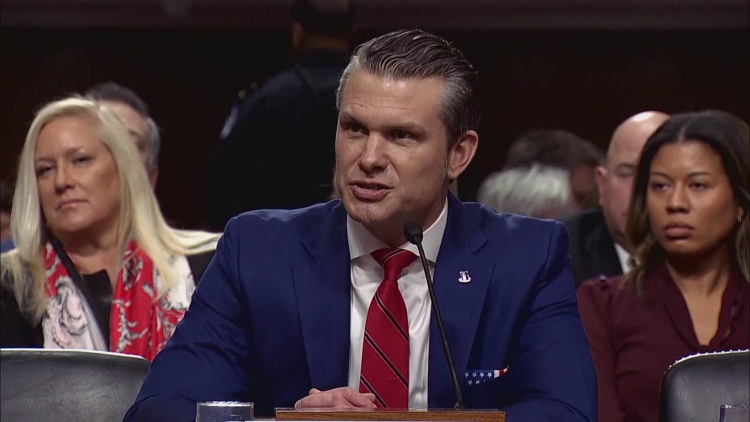Share this @internewscast.com

Defense Secretary Pete Hegseth unveils sweeping Pentagon overhaul, aiming to cut civilian jobs and streamline operations to boost U.S. military readiness.
WASHINGTON — Defense Secretary Pete Hegseth is calling for a sweeping overhaul of the Department of Defense’s civilian workforce, launching a plan he says is essential to building a leaner, faster, and more effective fighting force.
In a memorandum issued Friday, acquired through DOD press release email, Hegseth directed senior Pentagon officials to begin implementing the Workforce Acceleration and Recapitalization Initiative — a top-to-bottom restructuring designed to reduce “bureaucratic layers” and redirect resources to bolster America’s warfighters.
The memo, addressed to military leaders and agency directors across the department, outlines a two-pronged strategy: reduce the number of civilian full-time positions through voluntary separation and early retirement, and require every major DOD office to submit a future-state organizational chart that reflects streamlined leadership and staffing.
“The net effect will be a reduction in the number of civilian full-time equivalent positions and increased resources in the areas where we need them most,” according to the memo.
Major retirement program reopens under DOD control
Under Hegseth’s plan, the Deferred Resignation Program (DRP) — first introduced by the Office of Personnel Management earlier this year initially implemented by the Office of Personnel Management (OPM) on Jan. 28, as a limited-time offer for most full-time federal employees — including nearly 900,000 Department of Defense (DOD) civilians — to resign with full pay and benefits or take early retirement. — will reopen immediately, offering civilian employees the chance to resign with full pay and benefits until Sept. 30.
The early retirement option also returns for those eligible, but this time it will be administered by the Department of Defense rather than OPM.
“Exemptions should be rare,” Hegseth stated. “My intent is to maximize participation so that we can minimize the number of involuntary actions.”
Roughly 900,000 DOD civilian employees could be eligible for the voluntary programs, according to department figures.
Reorganization deadline set for April 11
The second part of Hegseth’s directive requires every department within the DOD to submit a new organizational structure by April 11. The updated charts must outline future staffing goals, streamlined reporting structures, and clearly defined roles.
Though no specific layoff numbers were cited, Hegseth signaled this would be a significant realignment intended to reduce redundancies and bolster readiness.
The memo states that the end goal is a force that is “lean, mean and prepared to win.”
Automation and emerging technologies are expected to play a major role in reducing duplicative tasks, especially at the headquarters level. Hegseth said the realignment effort will support his Interim National Defense Strategy, which emphasizes readiness, modernization, and decisive deterrence.
Defense officials face a tight timeline to reevaluate and reshape how their organizations operate. While the full impact of the changes remains to be seen, the Hegseth memo marks a clear shift toward aggressive workforce reform — one that could redefine the civilian structure of the Pentagon for years to come.
















